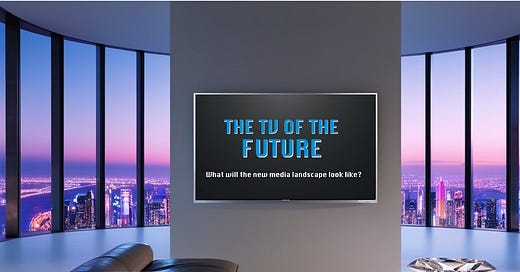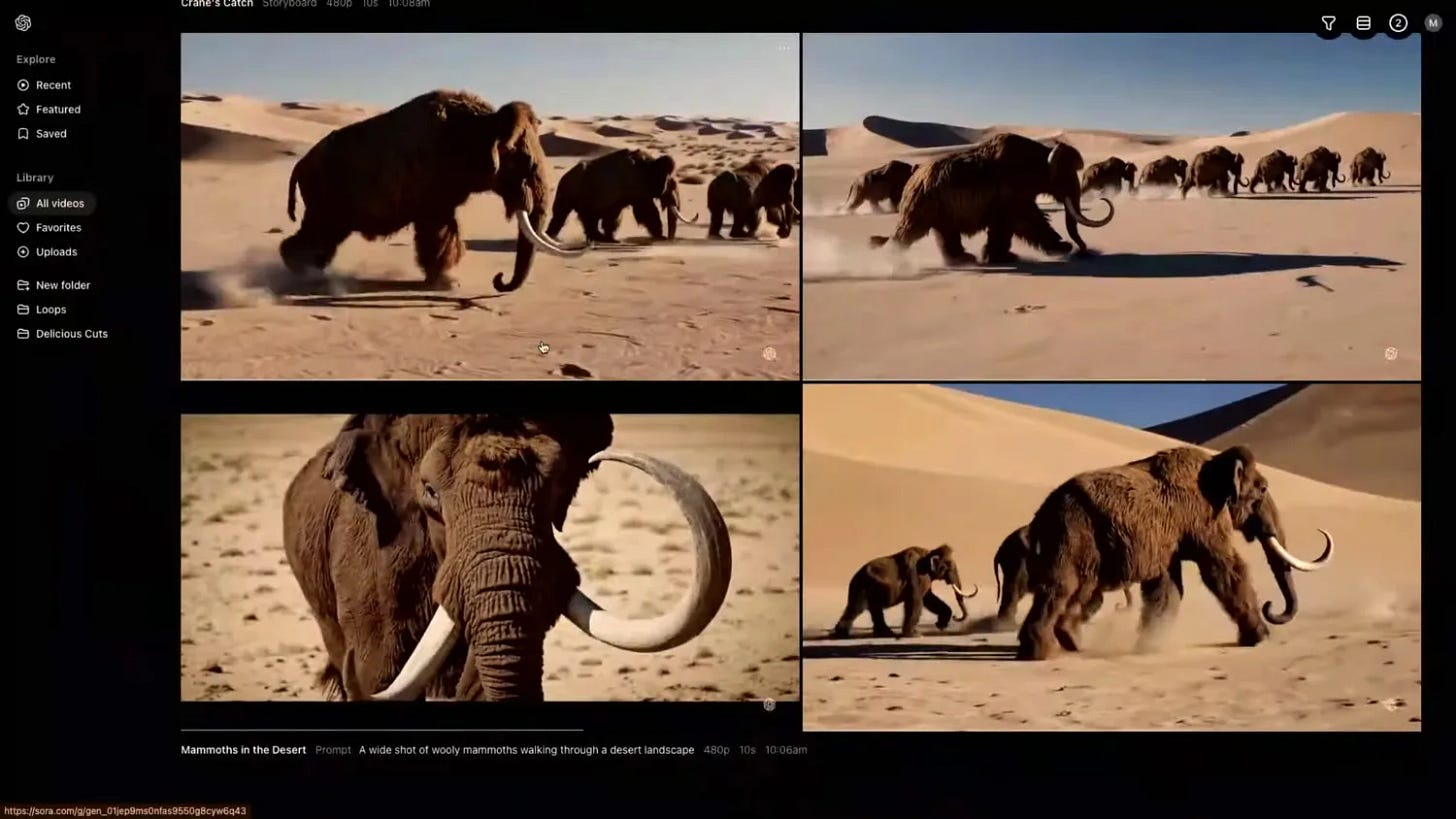A YEAR OF TRANSITION
2024 will be remembered as a year of transition. It was the moment when everyone (or almost everyone) realised that the media system is changing in a profound and irreversible way, and that in the next future nothing (or almost nothing) will be the same as before.
But the question is: where is the audiovisual world really going? How will the media system actually change? In short, what exactly is going to happen? Over the past few months, like everyone else, I have read all sorts of analyses and all sorts of predictions from all sorts of experts.
To be honest none of them convinced me completely because, in my humble opinion, they did not capture the whole of the changes and gave only a partial picture of what is going to happen, usually conditioned by their role: if they belong to the 'traditional' media, they underestimate the impact of the changes; if they belong to the online/digital or new technology world, they overestimate them.
The truth is more complex and nuanced, and must take into account many factors, not only of a technical and economic nature, but also the deep needs that audiovisual entertainment content satisfies.
THE 4 DRIVERS OF CHANGE
To begin with, there are four main, intertwined drivers of change, which are as follows:
The DIGITAL SHIFT - i.e. the gradual shift of the entire television system into the online dimension;
The impact of ARTIFICIAL INTELLIGENCE on the media industry;
The growth of the CREATOR ECONOMY, i.e. independent creators who have a direct relationship with consumers;
The increasing role of BIG TECH in our industry, both through the streaming platforms they own, and through the AI tools that are increasingly being used in the media industry at all levels.
Taken alone, these drivers would seem to suggest a scenario of radical change.
First of all the audiovisual industry as a whole is increasingly moving online (the data on this is irrefutable), leading to 'digital fragmentation', which in turn leads to 'Digital Jam': a potentially infinite ecosystem of channels, with a sprawling You Tube taking the lion's share.
Secondly, text-to-video tools (along with image-to-video and video-to-video tools) are becoming more powerful (we've all seen Sora's incredible performances) and multiplying by leaps and bounds (in addition to Sora, there are many others such as Vidu, Kling, Runway, Pixverse, Luma, Pika, Haiper and the new tools from Meta - AI Movie Gen - and from Google - Veo…). At a fraction of the cost, anyone can now create incredibly realistic videos from simple text input.
The growing success of the creator media economy is evidenced not only by the growth in total revenues ($250 billion in 2023 and, according to Doug Shapiro’s estimates, $600 billion in 2030), but also by the increasing attention it is receiving from the market and from traditional operators: see the dedicated sections within Content London and Content Americas - Create London and Create Americas respectively - and the more recent Conecta Digital in Madrid and Paris Creator Week. According to some analysts, this growth will be at the expense of the traditional corporate media economy.
Finally, the increasing role of Big Tech (Alphabet, Amazon, Apple, Meta, Microsoft, recently joined by NVIDIA), which controls a large part of the online and social platforms as well as the AI tools with which to create new content, seems destined to become the new masters of the audiovisual industry, displacing the traditional players.
THE PRIMARY NEEDS OF THE VIEWERS
But this is only one side of the coin, and a partial one at that. What many, even brilliant analysts, forget, and what should be kept in mind in order to understand what will really happen in the future media scenario, are also the deeper and more conservative needs of viewers, not just what might happen in the new media landscape from a technological and economic point of view.
First, audiovisual content also serves as 'social currency'. This means that there will always need to be programmes - scripted and unscripted - that are watched almost simultaneously by a large number of people, so that they can talk about them in social moments. Too much fragmented programming would prevent this function, so there will always be a - fairly limited - number of 'generalist' platforms/channels that serve as 'common ground for sharing'.
These could be global SVoD platforms as well as big local 'historic' media groups, or at least those that have planned in time for a rapid and effective 'online shift' of their audiences. No matter how many channels/platforms there are, and how many 'creator stars' emerge from the coming 'Digital Jam' (and there will be countless), those who have built and maintained a significant competitive advantage will continue to do so, at least for long enough.
Another primary human need is storytelling, i.e. being told stories, even - and especially in this century - in the audiovisual mode, in a traditional passive way (which is not a bad word at all), 'simply' being passionate about the content and its protagonists.
It's a need that goes back to the Paleolithic - about 2.5 million years ago - and it's not going to change just because there are other options now. Try asking young people, the same ones who are superficially said to only be on socials or who all want to be content creators, if they have ever watched a dating show, a reality TV show, a game or a series of any kind in the ‘old’ way, i.e. just enjoying the content lying on the sofa: 100% of them will say yes.
On the other hand, it is undoubtedly true that another fundamental need is that of gaming, i.e. interacting with content in the first person in different ways and at different levels, and this function, which was penalised in the past, is made possible by the current media system and new technologies.
THE NEW MEDIA LANDSCAPE
Having said all this, what will the media system of the future look like? First of all, it will be extremely varied and diverse, but for the sake of simplicity it can be understood in terms of two main groups, from the point of view of the type of content.
The Human Factor
The first includes a large part of the scripted and unscripted programmes that will in fact be very similar to today's: they are the ones that have the HF (Human Factor), i.e. they are ‘made by people for people’ and derive their motive of interest precisely from the fact that their protagonists are ‘flesh and blood’ people like us, and not virtual characters created by AI.
These are programmes in which human emotions and feelings - in all their infinite variations - play a leading role, and are based on the assumption that it is 'real' people who experience certain emotional reactions in their skin, that is, 'human'. Virtual protagonists, even if created as realistically as possible, would never arouse the same interest: an artificially created being crying because it has been abandoned by another virtual being, for example, cannot be emotionally involved.
And if the protagonists are 'flesh and blood' people, then the production process must necessarily involve the presence of 'flesh and blood' professionals, even if they are assisted in their task by AI tools that will make their work more quick and efficient.
This macro-category includes all those programmes that satisfy certain basic human needs and which, not by chance, have been the 'reservoirs' of non-fiction content since the birth of television: to play, to be exciting, to compete, to laugh. These are needs that have accompanied the human species since the dawn of time, and it is precisely for this reason that they will continue as in the past to have 'real' protagonists, and therefore a fairly limited use of AI software, exclusively to support human professionals.
It is a pure fact of empathy, which is only triggered by the presence of our fellow human beings beyond the screen (as well as live, of course), or otherwise not triggered at all. And where there's the Human Factor, there can't be an overwhelming use of Artificial Intelligence, even if it could be theoretically possible.
A quick parenthesis to forestall a possible objection: no, HF cannot be faked. As hyper-realistic as videos created with AI tools are - and will increasingly become - they will never be able to simulate HF in a medium or long-form content. There will always be a tiny twinkle in the eye or an imperceptible twitch of the lips to remind the viewer that there is a creature with 'flesh and bones and emotions' just like us on the other side of the screen.
And in any case, the legislative aspect seems - fortunately - to be well directed towards requiring that it be clearly indicated when one is in the presence of artificial characters; and those who violate this rule and are discovered - a very likely eventuality - would face repercussions, not only from a legal point of view, such as to discourage, or at least greatly reduce, this fraudulent practice.
The Gamification
But there is room for everyone and everything in the ‘Digital Jam,’ because it will contain an infinite number of channels, platforms and media spaces. So there will be all kinds of content, of very different types and qualities. In particular, there will be a special place for those designed to satisfy that fundamental human need we mentioned earlier: first-person interaction (gaming and gamification).
This is the area where the media system will change radically, merging even more with the world of video games, creating a huge 'gaming sphere' capable of generating massive amounts of profit. And it will be in this sector that the creator media economy will develop enormously, using Artificial Intelligence in a leading role, not just as a tool to assist human professionals.
This evolution is happening right now. Here are some examples of this 'media gamification', where TV content merges with the gaming experience:
BBC Studios has partnered with Reality+ to launch a Top Gear-based digital experience on social gaming platform The Sandbox. The free-to-play game is called The Stigverse and features classic Top Gear television highlights, including custom builds and iconic moments from the show.
BBC Three's The Rap Game UK is expanding its brand through the Fortnite Creative platform. The collaboration between the TV show and HaZimation is the first rap battle to take place in Fortnite, and will feature motion-captured live rap battles alongside avatars of each of the artists featured in the experience.
Upcoming sci-fi TV show Telemutes has released an AI-driven image-generation tool that allows users to transform themselves into unique human-animal hybrids.
The upcoming Showrunner interactive platform (https://www.showrunner.xyz/) will allow viewers to create customised scenes, episodes and shows.
The Adventr platform (https://adventr.ai) allows viewers to interact and decide the storyline and ending they want.
The new AI-powered interactive video platform Revealit TV (https://revealit.tv) enables viewers to interact with what they see on screen, either immediately or after they have finished watching.
Finally, we must mention the recent phenomenon of ‘text-to-game tools’, such as startup Exists (https://existis.ai) which allow anyone to create high-quality 3D games from text prompts.
But the fun is yet to come: this is an extraordinarily fast-moving sector that is redrawing the boundaries of the audiovisual industry, thanks to Artificial Intelligence tools that will express all their exceptional potential in this field, allowing 360° interaction with users and full of surprises yet to be discovered.
CONCLUSION: AN EXCITING MULTI-LEVEL FUTURE
In short, the future of television can be defined with just one word: multi-level.
At one end, there will always be 'traditional' content that will continue to appeal to audiences of all ages, as it always has and always will. At the other extreme, there will be 'hybrid' content that exploits the full potential of new technologies to create new forms of entertainment, where the boundaries between users and creators will become increasingly blurred.
In between is the infinite range of content - created by the ‘traditional corporate media economy’ and the ‘new creator media economy’ - to satisfy the insatiable appetite for audiovisual stories of an increasingly global audience, as language barriers become thinner and thinner until they disappear altogether (also thanks to Artificial Intelligence in its infinite applications).
There will also be several levels of content creation. On the one hand, the 'traditional' players (producers and distributors) will continue to do their work. On the other, there will be an increase in independent creators working for their own online channels - but not only. In between, there will be 'hybrid' models (indie creators working with traditional prodcos and broadcasters).
In short: there will not be a drastic change of scenery, with new technological and economic models taking the place of the traditional ones, as the more ‘radical’ analysts would like.
Instead, there will be room for everyone in the new media landscape, and the more 'disruptive' innovations (artificial intelligence and the creator economy) will coexist with the more traditional models that have been established in recent years.
I truly believe it will be an exciting time to be in the industry, as long as you are willing to get involved.
This article can be downloaded for free from Monday 13 January at FORMAT ESPRESSO - LECTURE NOTE : https://www.formatespresso.it/format-esprresso/
NEWS IN A NUTSHELL
Thursday 9th January Red Carper - Vip al Tappeto, produced by Blu Yazmine, the local version of Nippon Tv's Red Carpet Survival, premiered on Prime Video Italia.
This evening, Friday 10th January, the fourth season of the original talent show Dalla Strada Al Palco ('From the street to the stage'), produced by Stand By Me, will premiere on Italian Rai; the news is that after three seasons on Rai 2 (where it debuted in 2022), this year the show has been promoted to the main channel Rai1.
The reality format The Box, from the Norwegian Seefood TV, has landed two international adaptations: RTL Netherlands and TV 2 Denmark commissioned the series straight to license, making them the first international broadcasters to secure the format ahead of its Norwegian premiere on TV 2 on January 9. TV 2 Denmark plans to launch its first season in 2025.
TVN, part of the Warner Bros. Discovery network, has commissioned a local series of adventure reality format Eternal Glory to launch in Poland. Locally titled Mistrzowskie Pojedynki: Eternal Glory, the show, is set to premiere on Wednesday January 15, 2025
Banijay-owned dating show Going Home for Love has scored its fourth international edition, with Poland's TVP commissioning a new season of the series for its local market, to be produced by Endemol Shine Poland with the local title Żona dla Polaka ('A Wife for a Pole').
Paramount+ and MTV have commissioned a second season of the reality series Dating Naked UK, with Rylan Clark returning as host.
M6 Group-owned children’s channel Gulli in France is to premiere a local language version of hit UK music quiz show The Hit List, having licensed the format from Israeli distributor Keshet International.










Excellent insights, Axel (as usual!) - Thank you !